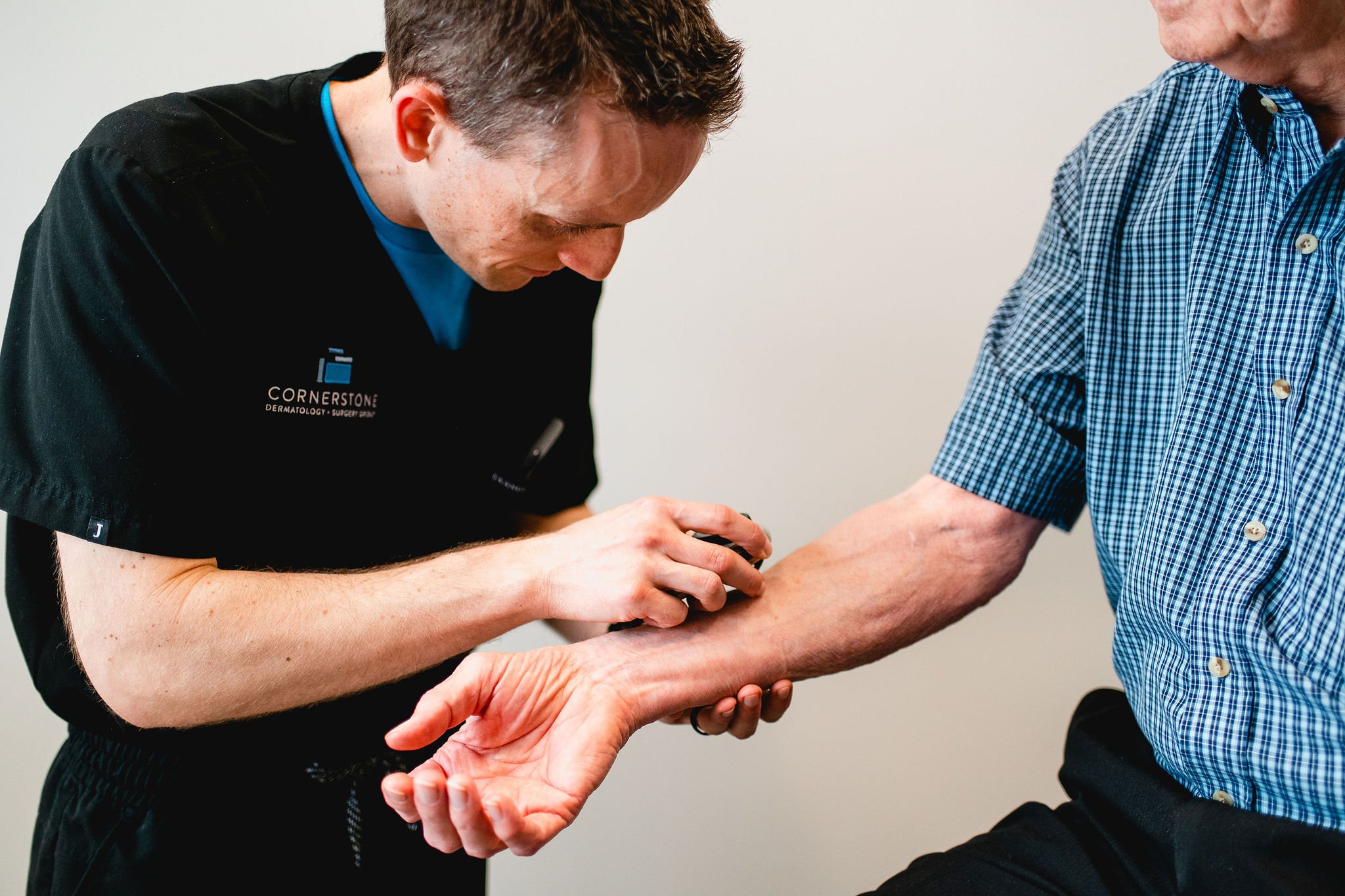How to Recognize the Signs of Sun Damage: A Dermatologist's Guide to Prevention, Detection, and Treatment
Sunlight is essential for life — but when it comes to your skin, too much exposure can cause lasting harm. As a dermatologist, I see the effects of sun damage every day, and I often hear patients say, “I thought it was just aging.” In reality, many of those changes are due to cumulative sun exposure over time.
Understanding the signs of sun damage — both cosmetic and precancerous — is crucial. At Cornerstone Dermatology in Lee’s Summit, we’re here to help you recognize these changes early and offer safe, effective treatment options to protect your skin for the long term.
Visible Signs of Sun Damage
Sun damage often masquerades as typical aging, but there are some telltale signs that UV exposure is the true culprit. Here are a few of the most common visible signs of sun damage:
Fine Lines and Wrinkles: UV radiation breaks down collagen and elastin in the skin, leading to premature wrinkling — especially around the eyes, mouth, and forehead.
Lentigines (“Sun Spots” or “Age Spots”): These flat, brown spots often appear on sun-exposed areas like the face, hands, shoulders, and chest.
Poikiloderma: A combination of redness, pigmentation, and thinning of the skin, typically seen on the sides of the neck and chest.
Telangiectasias (Broken Capillaries): Sun exposure can dilate tiny blood vessels, leading to persistent redness and visible veins.
While these changes are largely cosmetic, they indicate ongoing damage and an increased risk for more serious concerns — including skin cancer.
Precancerous Changes: What You Should Watch For
The most concerning signs of sun damage are the ones that increase your risk for skin cancer. One of the earliest warning signs is:
Actinic Keratoses (AKs): These rough, scaly, or crusty patches typically appear on sun-exposed areas like the scalp, face, ears, neck, and hands. They may feel sandpapery and come and go — or persist and grow. AKs are considered precancerous and can progress into squamous cell carcinoma if left untreated.
Other skin signs that concern us include:
A new or changing lesion
Non-healing sores
Spots that bleed, itch, or feel tender
If you notice any of these, it’s important to schedule a skin exam with a board-certified dermatologist.
Sun Damage Treatment Options at Cornerstone Dermatology
At Cornerstone Dermatology, we offer evidence-based treatments tailored to the severity and location of sun damage:
Treatment of precancerous lesions (AKs)
LN2 (Liquid Nitrogen Cryotherapy)
A quick in-office treatment used to freeze and destroy actinic keratoses and other benign lesions. The treated area may blister and peel before healing.Topical Prescription Therapies for precancerous
These include:5-Fluorouracil (5-FU)
Imiquimod
Tirbanibulin (Klisyri)
These creams are applied at home and work by targeting abnormal cells over the course of several weeks.Blue Light Photodynamic Therapy (PDT)
A non-invasive procedure ideal for treating widespread sun damage. We apply a photosensitizing agent to the skin, then activate it with blue light, selectively destroying precancerous cells while sparing healthy tissue.Skincare regimens
Topical regimens, such as application of a morning antioxidant and nighttime retinoid can help lessen the appearance of some forms of sun damage and prevent worsening.
If nothing medically concerning is found on exam, other more aggressive cosmetic treatment options exist such as referral for IPL or other cosmetic laser treatments.
Sun Protection & Prevention Tips
I subscribe to the old adage that ‘an ounce of prevention is worth a pound of cure’. This rings true with the skin as well, as the best defense against sun damage is prevention. Here’s how you can protect your skin every day:
Broad-Spectrum Sunscreen: Use an SPF 30+ sunscreen daily, even on cloudy days. Reapply every two hours during outdoor activities.
Protective Clothing: Wear wide-brimmed hats, sunglasses, and UPF-rated clothing when spending time outside.
Seek Shade: Especially between 10 AM and 4 PM, when UV rays are strongest.
Daily Nicotinamide (Vitamin B3): Studies suggest that 500 mg of nicotinamide twice daily may reduce the risk of new non-melanoma skin cancers in high-risk individuals.
Regular Skin Exams: Annual visits to a dermatologist can help catch problems early and ensure peace of mind.
When You Should See a Dermatologist
If you’ve noticed any suspicious spots, or simply want to evaluate your skin for sun damage, schedule an appointment with us at Cornerstone Dermatology in Lee’s Summit. Whether you’re dealing with early changes like sun spots or precancerous lesions like actinic keratoses, we offer personalized care to help you restore and protect your skin.
Dr. Ross Reule is a board-certified Dermatologist and Mohs surgeon, who has been caring for patients in the Kansas City area since 2013. Call 816-287-1528 to schedule an appointment with him at our Blue Parkway office location in Lee’s Summit.


